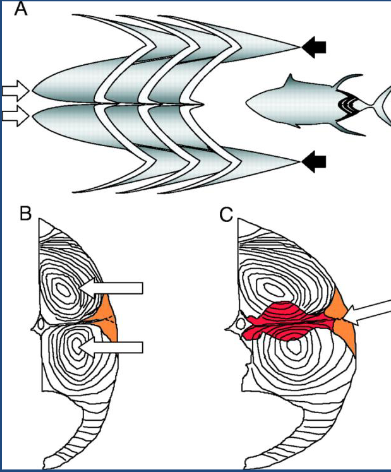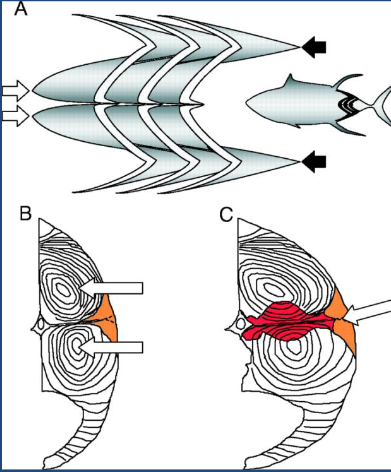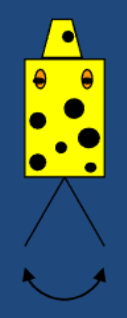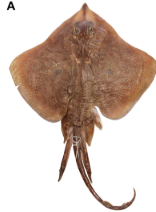Buoyancy and locomotion
1/21
There's no tags or description
Looks like no tags are added yet.
Name | Mastery | Learn | Test | Matching | Spaced |
|---|
No study sessions yet.
22 Terms
sinking components of animal tissue
proteins and skeleton/structural elements
floating components of animal tissue
lipids, some fluids, gas-filled cavities
strategies to reduce sinking
low density bodies, reduction of heavy structures, gas bladders, generate lift with propulsion and fats/oils
what is the purpose of ornate body structures on phytoplankton?
increase drag without adding weight so it can stay in one zone
how does alteration of body fluids reduce density?
osmoregulation allows the animal to control the weight of the fluid inside the cells (more solutes = denser)
what do diatoms store instead of starch?
fat
where is the gas bladder located in fish?
near the spine
what percent of the body volume does the gas bladder make up?
5%
types of gas bladders in fish
physostome and physoclist
physostome gas bladder
connected to exterior via esophagus; change depth rapidly by gulping air/releasing gases
physoclist gas bladder
not connected to exterior; limited in depth change by slow filling/emptying of bladder
nekton
any aquatic organism that swims without touching the bottom of the
do nektons have high or low reynold’s numbers when swimming?
high

red muscles
oxidative. rich in myoglobin for endurance

white muscles
glycolytic. rapid acceleration and burst swimming
swimming forces
lateral flexures move back along fish → water adjacent to fish is propelled backwards → creates forward thrust
physical limitations to swimming
pressure drag and friction drag
ways to reduce drag
mucus, smooth scales (denticles), hydrodynamic shape, pulse-glide swimming

name the fish body form
anguilliform. entire body flexed in undulating waves. eels.

name the fish body form
carangiform. body thrown into shallow wave. oval body and keeled tail. tuna.

name the fish body form
ostraciform. inflexible body. small oscillation of tail. cube fish.

name the fish body form
rajiforme. undulatory waves passed through extended pectorals. rays.